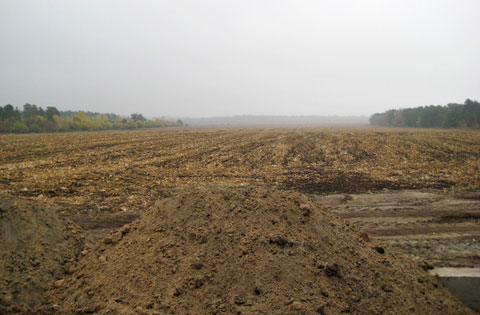



Selecting a Hatchery Location
Finding a suitable location requires time and thorough investigation, according to Sander Koster of Pas Reform.Having made the decision to build a hatchery, finding the right location is a critical first step. Not every piece of land is suitable as a hatchery site - and finding a good location that is fit for purpose deserves some time and proper investigation, in order to give the hatchery a good start.
There are five key factors, namely district ordinance (regulations), environment, infrastructure, altitude and soil, which should be carefully reviewed to determine whether a location is suitable or not.
Consider district ordinance and any permits that may be required to begin constructing the hatchery. As an industrial building, there may be concerns, for example, over pollution or other environmental impacts, which could result in restrictions at the selected location. Are there any development plans for the future of the area where the hatchery is intended? Checking these aspects of your hatchery plan before investment begins is always advisable.
To maintain high level biosecurity, the hatchery should be located at least one to three kilometres from any other poultry and livestock farms. Prevailing wind direction should be monitored, especially in relation to the hatchery’s air inlet and exhaust points, to avoid introducing dust and contaminants from the environment.
A good infrastructure foresees the hatchery’s accessibility, energy and data communication needs, both for start-up and in the future. Easy access is an absolute necessity for the modern hatchery. A badly surfaced road will cause vibration to the eggs on the truck, which may reduce egg quality. As importantly, the location of the hatchery in relation to its farm customers can significantly improve logistics and help to reduce costs.
The hatchery needs energy to operate and, depending on its size, a certain amount of electrical, cooling and heating capacity. These can be provided by a variety of energy resources. The primary supply may be mains power from the local power grid and a nearby lake or river, for example, may provide an excellent source of cooling. For all the hatchery’s different energy needs, it is critical that an uninterrupted supply is available - and wise to ensure that back-up installations are in place.
Data communication is fundamental to any modern business. Good access to the internet will enable machinery software to be updated and support functions to be accessed remotely, as well as enabling ‘anywhere, anytime’ log-ins, to check on operations.
Hatchability and chick quality are affected by altitude. Barometric pressure declines with altitude, as does the partial pressure of oxygen and absolute humidity. Fresh ventilating air will tend to be colder and drier at altitude than at sea level. These affects can be minimised, depending on the altitude at which the hatching eggs are produced and the corresponding adjustments made to the incubation programme.
Finally, the properties of soil types do differ and may, for example, be more prone to expansion or shifting than other types. If the ground at the new hatchery site is unstable, this could compromise the hatchery structure, causing cracks in the walls or problems at foundation level. Soil testing will determine the type and depth of foundations required for your hatchery, enabling an accurate cost projection for the type of groundwork necessary.

Advice
- Review any planning consents or restrictions and any future development plans for the district in which the hatchery will be located
- Monitor and maintain a high level of biosecurity for the area surrounding the hatchery, to minimise or prevent any risk of contamination
- Ensure that energy supplies are stable and reliable to protect the hatchery against failures or damage to machinery
- Consult a specialist for advice and guidance in relation to the effects of altitude on the incubation programme
- Probe the location’s geographical features and soil properties so these can be taken into account in the development of the hatchery’s groundwork.
July 2012








